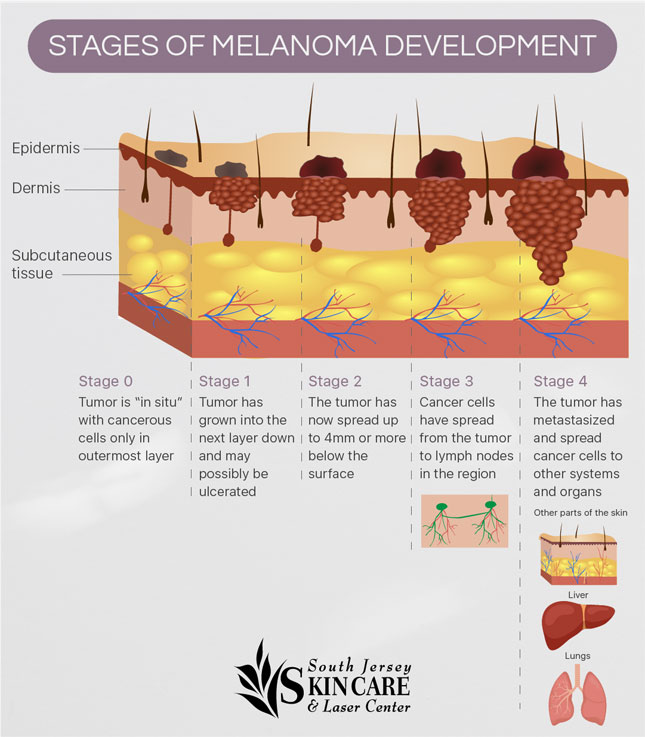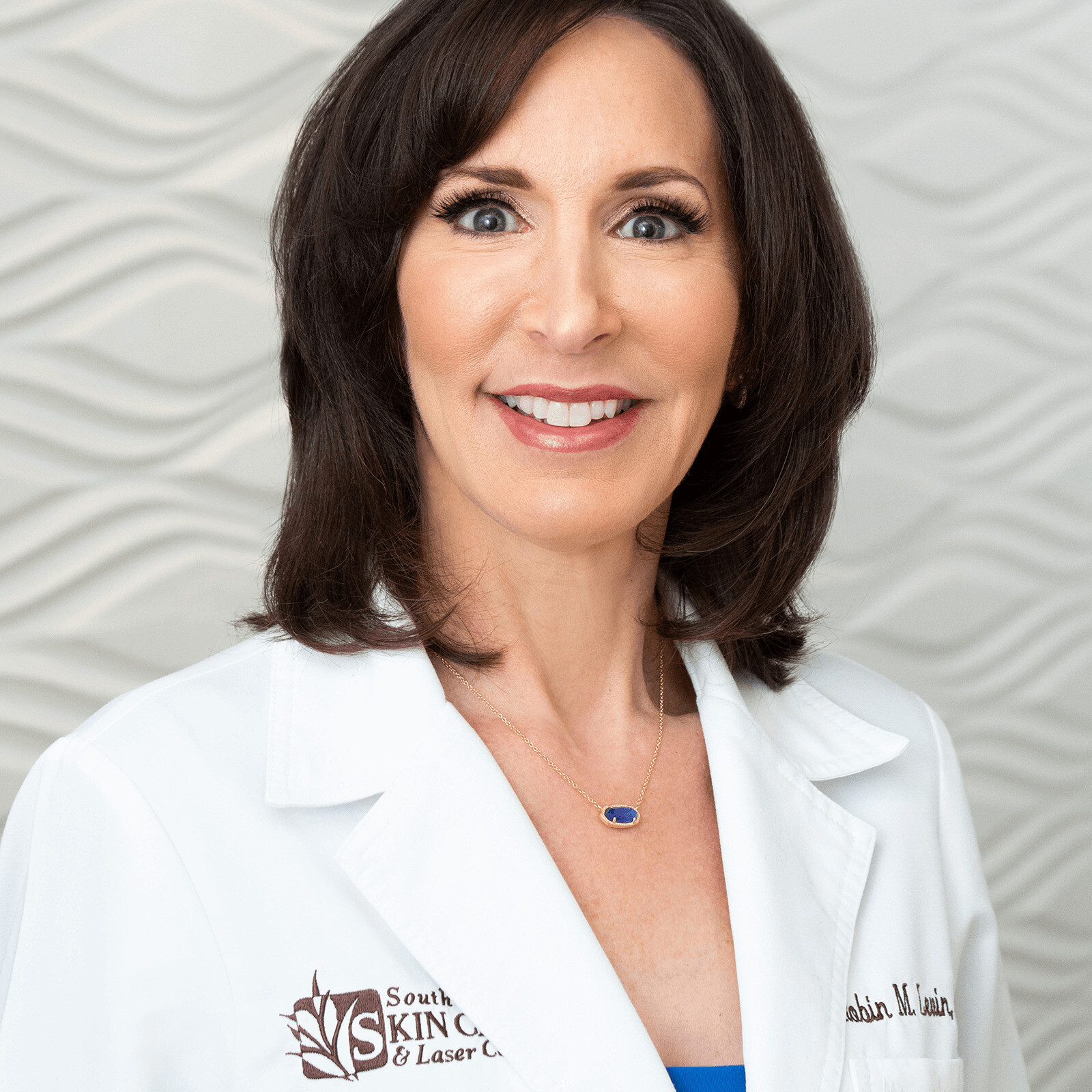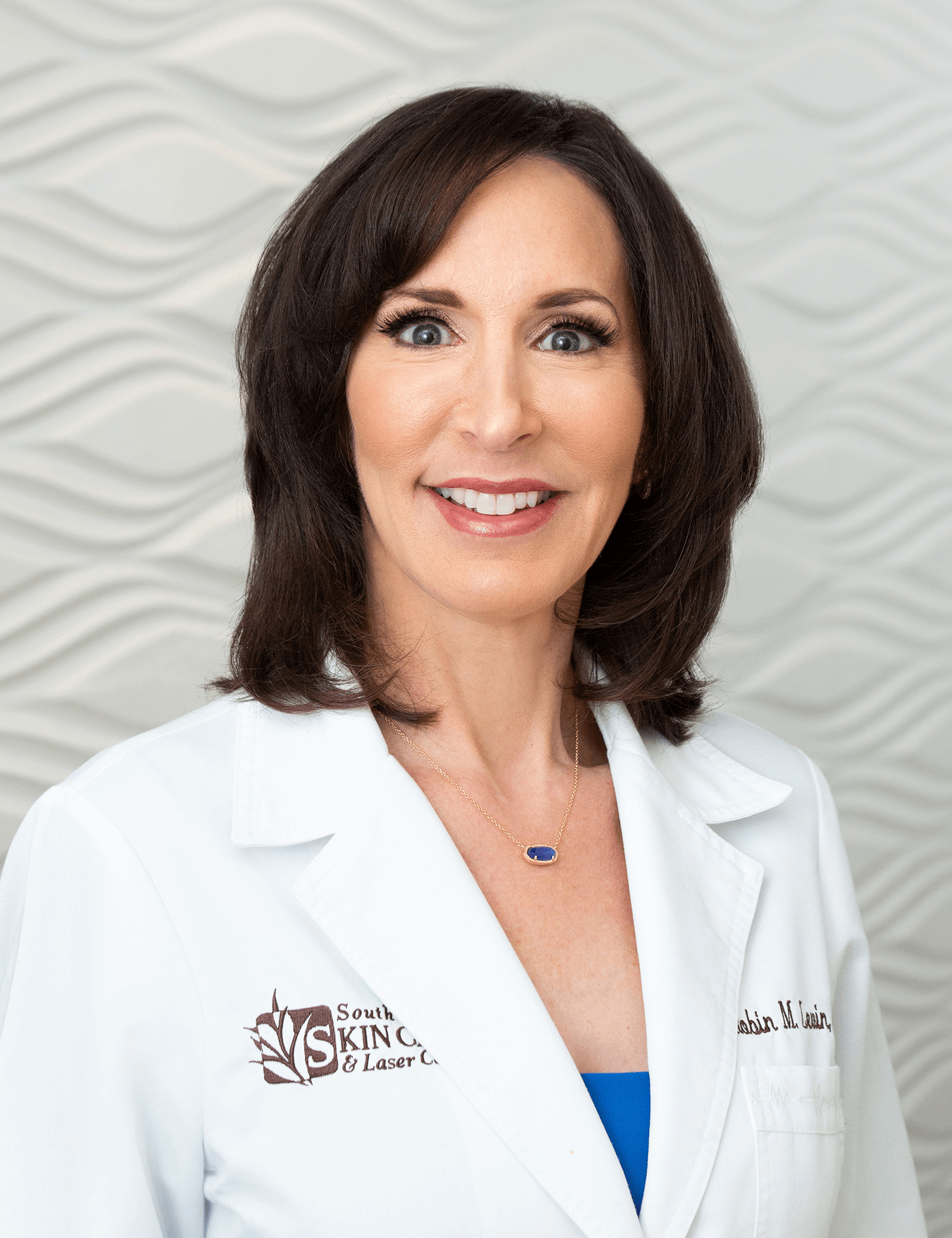- Home
- CLINICAL DERMATOLOGY
- Skin Cancer
Diagnosis, Advanced Treatments, and Attentive, Compassionate Care for Melanoma and More in the New Jersey Area
Skin cancer is the most common type of cancer in the world. It’s estimated that one in five Americans will develop this type of cancer by the age of 70, and the number of melanoma cases increased by 31 percent between 2012 and 2022, according to The Skin Cancer Foundation. Patients can receive an accurate diagnosis and the best possible care for skin cancer at New Jersey’s South Jersey Skin Care & Laser Center.
There’s no doubt that early detection of skin cancer—at the stage when it’s easiest to cure—can save lives. Our clinical dermatology team can guide you through the entire skin cancer journey, from prevention to diagnosis, removal, and post-cancer skin care to ensure that you are as comfortable and well-informed as possible. Board-certified dermatologist Dr. Robin Levin and her team will be there to support you every step of the way.
Want more information about diagnosis and treatment of skin cancer in New Jersey? Book online at South Jersey Skin Care & Laser Center. You can also call (856) 810-9888.
What Is Skin Cancer?
Skin cancer is the abnormal growth of cells in the skin, typically occurring after there is some type of damage to those cells. Unrepaired damage to the cellular DNA causes out-of-control growth of cells, which triggers mutations. The cells multiply quickly, eventually leading to the formation of malignant tumors. A biopsy can help you determine whether a lesion or mole on your skin is cancerous.
For most patients, exposure to ultraviolet radiation from the sun is a primary cause, but there are many factors that can lead to the disease.
Although it is common, skin cancer is still very dangerous. Fortunately, if it is detected early, it’s possible to completely remove cancerous cells—and with minimal scarring. In fact, it’s often possible to detect growths at a pre-cancerous stage before they have developed into cancer and penetrated beneath the skin.
Our team of caring professionals has adopted a compassionate approach to skin cancer treatment, taking the time to listen and thoroughly respond to all questions and concerns. With our primary focus on cosmetic dermatology, we will also take every precaution to ensure that potential scars from skin cancer-related surgery are as small and inconspicuous as possible.
How Is Skin Cancer Prevented?
The risk of developing skin cancer can be greatly reduced by taking certain measures, such as prioritizing sun protection, avoiding getting sunburned, and regularly examining your skin for unusual growths or similar changes.
You can limit exposure to UV rays by wearing sun-protective clothing; routinely applying a sunscreen that’s SPF 30 or higher, broad-spectrum, and water-resistant; seeking shade from direct sunlight and reflective surfaces; and avoiding tanning beds.
There does seem to be a genetic component to skin cancer as well, so it may not be possible to entirely avoid risk. That’s why routine skin exams are also an important strategy.
What are the Different Types of Skin Cancers?
The skin is the body’s largest organ, and it is made up of several layers. The cells that are affected by a cancer help physicians to identify the type of skin cancer it is.
Skin cancer first develops in the epidermis, which is the outermost layer of skin. There are three types of cells found here: squamous cells, basal cells, and melanocytes. Squamous cells are the thin, flat types found in the top layer, basal cells are the rounder cells that live directly underneath them, and melanocytes—which are pigment-producing cells—are found in the lower area.
There are three main types of skin cancer that account for almost all diagnoses: melanoma, basal cell carcinoma, and squamous cell carcinoma. In addition to these, there are other rarer types such as Merkel cell carcinoma, Kaposi sarcoma, and cutaneous lymphoma.
Wondering which type of skin cancer is the most serious? Read more about non-melanoma and melanoma skin cancer here.
Non-Melanoma Skin Cancer
The most common types of skin cancer are non-melanoma, a category that includes basal cell carcinoma (BCC) and squamous cell carcinoma (SCC). These develop in basal or squamous cells, respectively, in the top layer of skin (epidermis). As they grow, however, they can penetrate more deeply into the skin, invading the dermis.
BCC or SCC can first appear as a new bump or growth on the skin, which may be pink and scaly, or waxy, scar-like, or shiny. The bump may bleed or scab without any external cause, or look like a pimple that persists over several months.
If left untreated, non-melanoma skin cancers can spread to larger areas of skin, causing pain, bleeding, and possible disfigurement. However, if detected early, they are easily treatable, and typically stay localized to the skin and do not spread to other parts of the body.
Melanoma Skin Cancer
Melanoma skin cancers derive from the pigment-producing cells in the skin known as melanocytes. Melanoma is the third most common type of skin cancer—but although this type of skin cancer is less common, it can be more aggressive than BSS and SCC. Melanoma has a greater risk of invading other parts of the body and can be fatal if not diagnosed and treated early enough.
Since it can spread more rapidly, early detection of melanoma is crucial to the effectiveness of any treatments. Melanoma can appear as a new growing mole, or as an existing mole that is changing. Typically, such moles stand out from others as “ugly ducklings.”
It is possible in many cases to spot skin cancer and treat it early. Even rapidly growing skin cancer, whether melanoma or non-melanoma, can be removed effectively when detected early enough.

Learn the stages of melanoma, a fast-moving and deadly form of skin cancer. New Jersey’s South Jersey Skin Care & Laser Center encourages routine self-checks and dermatologist-led full-body scans to identify cancerous lesions as early as possible in order to maximize the chances of the best outcome from treatment.
What Are the Risk Factors for Skin Cancer?
The causes of skin cancer are not fully understood by scientists. However, there are risk factors that will make some people more likely to develop certain types of skin cancer. Exposure to ultraviolet (UV) radiation from natural or artificial sources is the primary cause of skin cancer in many cases. The risk can increase with cumulative sun damage and a history of blistering sunburns.
If you have many moles, light skin that burns or freckles easily, natural blond or red hair or blue or green eyes, a prior skin cancer diagnosis, a weakened immune system, or are older than 30, you are more likely to develop skin cancer. While skin cancer can occur at any age, it is more likely to develop in individuals aged 50 or older.
Additionally, if you have a family history of skin cancer, you will be at a higher risk for the disease. Some patients may need to start regular skin exams at an earlier age if they have a family or personal history of skin cancer, or if they have other risk factors.
Get in touch with South Jersey Skin Care & Laser Center at 856-810-9888 for more advice about skin cancer from our New Jersey practice or book online.
What Are the Warning Signs of Skin Cancer?
Skin cancers don’t all look the same, and they may not cause many symptoms in their earliest stages. It is important to the South Jersey Skin Care team that you are knowledgeable about what this condition could look like. Any abnormal changes to your skin can be a potential sign of cancer. Being able to spot warning signs can increase the chances of a successful treatment, so it helps to know what you should be looking for.
Patients will frequently ask us questions like, “What does skin cancer look like?” Fortunately, there are certain common characteristics to watch for. The first sign may often be a lump, spot, or scaly area on the skin. You may find a cancer yourself by noticing a mole that begins to change; a patch of skin that begins to feel rough, dry, or scaly; or even a new growth or bump that develops.
You know your skin best, and are in the best position to spot anything that looks out of the ordinary. We can help you learn how to detect abnormalities so that you can be proactive about your health and request an appointment with one of our providers. It’s important to be vigilant for any changes to your skin so that you can get a diagnosis as early as possible.
If you think a lesion on your skin might be skin cancer, it’s best to know the common warning signs of this disease. The “ABCDE” rule is an easy way to remember what the warning signs may be. These five signs include:
A for Asymmetry: A mole’s shape can signal the presence of cancerous cells. While some lesions may look symmetrical or neatly rounded, the rapid and uncontrolled growth of cancerous cells is more likely to lead to asymmetrically shaped ones.
B for Border: The border or edge of a precancerous lesion is often less defined than that of a benign mole. Sometimes, the lesion can resemble a stain spreading across the skin.
C for Color: Moles, even if they are not brown or black, typically have an even distribution of a single shade and color. Watch out for any moles that appear to have multiple colors or shades. These can often look like a mesh of varying blacks, browns, reds, blues, or even whites.
D for Diameter: While moles can vary greatly in size and shape, one that is larger than six millimeters in diameter or across could be cause for concern.
E for Evolution: A mole that starts to evolve or change (in size, shape, color, texture, or other aspects) can indicate a growth or multiplication of cells due to cancer.
Another recognition strategy for melanoma is the Ugly Duckling sign. When you’re examining your skin, check for any mole among many that seems different to all of the others. A thorough skin examination by an experienced, board-certified dermatologist can help in the discovery of growths that may have gone unnoticed by patients, or occur in areas that are challenging for the patient to view. Annual skin exams are recommended after the age of 50.
Most of these growths develop in sun-exposed parts of the skin, such as the ears, nose, neck, scalp, chest, back, and limbs. Melanoma can also occur in less-exposed areas of skin, such as the soles of the feet, palms of the hands, under the nails, buttocks, groin area, and between the toes. When you’re examining your skin, don’t forget to check these less obvious areas as well.
Our Approach to Skin Cancer at South Jersey Skin Care & Laser Center
At South Jersey Skin Care & Laser Center, we encourage our clients to schedule a full body skin exam every year. According to the Skin Cancer Foundation, total body examinations cut melanoma deaths in half. Additionally, it is important to practice adequate sun protection measures and limit excessive sun exposure and the use of tanning beds.
Dr. Robin Levin and our team are highly knowledgeable about skin cancer and are experienced at skin cancer removal in New Jersey. We will develop a treatment plan for you, making every effort to minimize the visibility of scarring. If you’ve been diagnosed with skin cancer, contact South Jersey Skin Care & Laser Center to learn more about our treatment program.
South Jersey Skin Care & Laser Center in New Jersey
Dermatology for You
South Jersey Skin Care & Laser Center is dedicated to providing a phenomenal experience for every patient. The team of professionals led by board-certified dermatologist and Philadelphia-area “Top Doc” Dr. Robin Levin is made up of skilled and caring professionals who make each patient a priority. Providing personalized care for South Jersey residents’ dermatology needs is a privilege Dr. Levin has been embracing for more than a decade.
South Jersey Skin Care & Laser Center is dedicated to providing a phenomenal experience for every patient. The team of professionals led by board-certified dermatologist and Philadelphia-area “Top Doc” Dr. Robin Levin is made up of skilled and caring professionals who make each patient a priority. Providing personalized care for South Jersey residents’ dermatology needs is a privilege Dr. Levin has been embracing for more than a decade.
How is Skin Cancer Treated?
Can skin cancers be treated successfully? As doctors learn more about skin cancers and medical treatments have become more advanced, the outlook in terms of survival is hopeful. In most cases, cancers are successfully treated. Various specific techniques and procedures are used to treat this condition at our New Jersey practice.
The treatment plan will depend on the type and location of your cancer, the stage of the cancer, whether it has spread elsewhere, and your overall health.
Depending on your specific cancer, a surgical or non-surgical method may be advised. These can include excision, prescription creams, electrodessication, curettage, photodynamic therapy, radiation, lymph node dissection, or Mohs surgery. Most of the time, surgery is the main treatment method. You will have an opportunity to discuss any recommended procedure and treatment plan during your appointment.
Why Might the South Jersey Skin Care Team Refer Me Elsewhere for Mohs Surgery?
Mohs surgery, which is also known as Mohs micrographic surgery, is a common treatment used for cancers of the skin that involves cutting away layers of skin. Each layer is inspected, and the process continues until all of the cells have been removed and the surgeon can be assured that there are no signs of cancer left.
What sets Mohs surgery apart from other treatments is that the surgeon can see exactly where the cancer stops when they are removing malignant cells. As a result, this treatment has a very high cure rate.
Another benefit of this treatment is that it allows for the full removal of the cancer with minimal harm to the surrounding skin.
Mohs surgery is highly effective for cancers that have a high risk of returning or have returned before, are located in areas where the patient wishes to preserve as much healthy tissue as possible, have difficult to define edges, are large, or are growing rapidly.
All of these elements combine to make Mohs surgery an incredibly highly effective skin cancer treatment for the right patient. If Dr. Robin Levin determines that this approach would be best, she or a physician assistant will refer you to a specially trained doctor.
Which Treatments Are Available at South Jersey Skin Care & Laser Center?
There are cosmetic treatments that enhance the appearance of your skin if you have had cancer or wish to address cosmetic concerns. At our practice, we also provide a wide range of treatments to minimize post-cancerous scarring or for other skin conditions, including laser treatments, fillers (to fill in hollowed or recessed scars), and other aesthetic options. You will find the spa-like atmosphere of our state-of-the-art facility a welcoming and caring environment for all your skin care needs.
*We are all different! Patient results may vary.









